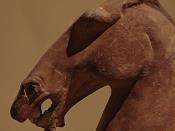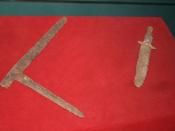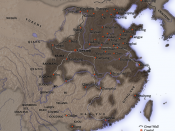The Roman Empire and the Han Dynasty
The Roman Empire (31 B.C.E.-476 C.E.) and the Han Dynasty (202 B.C.E.-220 C.E.) were prominent empires that existed simultaneously at opposite ends of Eurasia. An empire can be described as consisting of a set of regions locally ruled by governors, viceroys or kings in the name of the emperor. Rome and Han had these characteristics of an empire and also shared many similarities including government, slavery, and their downfall with a few differences.
Within the first 3 months after the death of Shin Huang, emperor of the Qin Dynasty (221-202 B.C.E.), civil war basically took place in China. By 202 B.C.E., the Han Dynasty was established. Liu Bang (peasant who became Han emperor) had defeated all of the other competitors in this revolt including Xiangyu, creating a renowned autocratic empire. Since the ruler was considered the basis of the state, autocracy (government in which one person has unlimited power) was the most powerful form of government during this time.
Rome also became an autocracy. After many years and many rulers, civil wars that had been taking place ended and Octavian Caesar became the first emperor transferring from a republic to an autocratic dictatorship like the Han Dynasty.
In Rome, city-states were prevalent, rather than kingdoms. They started as a republic in which power belonged to a group of citizens rather than in one family as China had. In this thinking, the citizens had more power and only a small portion of each community actually possessed citizenship. Due to this form of government, communal identity was more recognized in Rome than in China. The Roman Empire was more like a union of moderately autonomous provinces than the Han imperial system. Like Rome's provinces, now the Emperor had turned Han's integrated imperial system into...


